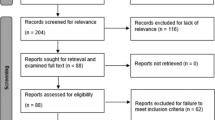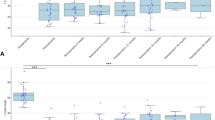Abstract
Study Design
Matched cohort.
Objective
To compare the unit rod instrumentation (UR) technique with all—pedicle screw (PS) constructs in the surgical care of scoliosis in Gross Motor Function Classification System IV/V non-ambulatory spastic quadriplegic cerebral palsy patients.
Summary of Background Data
Over the past 20 years, there has been a transition from the UR technique to the use of pedicle screws and iliac screws in neuromuscular scoliosis. To date, no head-to-head comparative analysis has been reported between the UR technique and PS constructs for posterior segmental spinal instrumentation and fusion in cerebral palsy patients.
Methods
A matched cohort study was performed between 2 tertiary-care pediatric centers: 1 using UR technique and the other PS constructs. Minimum follow-up was 2 years postoperatively (PS 2.5 years, UR 4.6 years, not significant). Fourteen patients were matched from each center based on age (mean age: PS 15.4 years, UR 15.5 years), preoperative pelvic obliquity (mean: PS 33.8°, UR 29.1°) and major coronal Cobb angle (mean: PS 100.9°, UR 100.1°).
Results
There was posterior-only surgery in 14 of 14 PS and 11 of 14 UR surgeries. The final follow-up Cobb angle was lower in the PS group (13.5° vs. 34.3°, p <.05), with 86.5% correction in the PS group and 65.7% in the UR group. Final follow-up pelvic obliquity was similar (PS 8.5° vs. UR 3.3°; not significant). There were no major complications in the PS group. In the UR group, there was 1 deep infection and 1 reoperation for removal of a prominent sublaminar wire.
Conclusions
This is the first study to directly compare UR with PS constructs using matched patient cohorts in this patient population. All—pedicle screw constructs had better correction of coronal Cobb angle, lower blood loss, and shorter hospital stays. There was no difference in the correction of pelvic obliquity, complications, or reoperations.
Similar content being viewed by others
References
Palisano R, Rosenbaum P, Walter S, et al. Development and reliability of a system to classify gross motor function in children with cerebral palsy. Dev Med Child Neurol 1997;39:214–23.
Sink EL, Newton PO, Mubarak SJ, Wenger DR. Maintenance of sagittal plane alignment after surgical correction of spinal deformity in patients with cerebral palsy. Spine (Phila Pa 1976) 2003;28:1396–403.
Ferguson RL, Allen Jr BL. Considerations in the treatment of cerebral palsy patients with spinal deformities. Orthop Clin North Am 1988;19:419–25.
McCarthy RE. Management of neuromuscular scoliosis. Orthop Clin North Am 1999;30:435–49; viii.
Miller A, Temple T, Miller F. Impact of orthoses on the rate of scoliosis progression in children with cerebral palsy. J Pediatr Orthop 1996;16:332–5.
Thometz JG, Simon SR. Progression of scoliosis after skeletal maturity in institutionalized adults who have cerebral palsy. J Bone Joint Surg Am 1988;70:1290–6.
Zimbler S, Craig C, Harris S. Orthotic management of severe scoliosis in spastic neuromuscular disease: results of treatment. Orthop Trans 1982;6:70.
Garrett AL, Perry J, Nickel VL. Paralytic scoliosis. Clin Orthop 1961;21:117–24.
Benson ER, Thomson JD, Smith BG, Banta JV. Results and morbidity in a consecutive series of patients undergoing spinal fusion for neuromuscular scoliosis. Spine (Phila Pa 1976) 1998;23:2308–17; discussion 18.
Drummond D, Breed AL, Narechania R. Relationship of spine deformity and pelvic obliquity on sitting pressure distributions and decubitus ulceration. J Pediatr Orthop 1985;5:396–402.
Majd ME, Muldowny DS, Holt RT. Natural history of scoliosis in the institutionalized adult cerebral palsy population. Spine (Phila Pa 1976) 1997;22:1461–6.
Jones KB, Sponseller PD, Shindle MK, McCarthy ML. Longitudinal parental perceptions of spinal fusion for neuromuscular spine deformity in patients with totally involved cerebral palsy. J Pediatr Orthop 2003;23:143–9.
Westerlund LE, Gill SS, Jarosz TS, et al. Posterior-only unit rod instrumentation and fusion for neuromuscular scoliosis. Spine (Phila Pa 1976) 2001;26:1984–9.
Bell DF, Moseley CF, Koreska J. Unit rod segmental spinal instrumentation in the management of patients with progressive neuromuscular spinal deformity. Spine (Phila Pa 1976) 1989;14:1301–7.
Dias RC, Miller F, Dabney K, et al. Surgical correction of spinal deformity using a unit rod in children with cerebral palsy. J Pediatr Orthop 1996;16:734–40.
Gau YL, Lonstein JE, Winter RB, et al. Luque-Galveston procedure for correction and stabilization of neuromuscular scoliosis and pelvic obliquity: a review of 68 patients. J Spinal Disord 1991;4:399–410.
Lonstein JE, Akbarnia A. Operative treatment of spinal deformities in patients with cerebral palsy or mental retardation: an analysis of one hundred and seven cases. J Bone Joint Surg Am 1983;65:43–55.
Alman BA, Jhaveri S, Wright J, et al. Long term outcomes and complications of unit rod instrumentation in the surgical management of neuromuscular scoliosis. Paper presented at the Pediatric Orthopaedic Society of North America annual meeting; May 24, 2007; Hollywood, FL.
Maloney WJ, Rinsky LA, Gamble JG. Simultaneous correction of pelvic obliquity, frontal plane, and sagittal plane deformities in neuromuscular scoliosis using a unit rod with segmental sublaminar wires: a preliminary report. J Pediatr Orthop 1990;10:742–9.
Hamzaoglu A, Ozturk C, Aydogan M, et al. Posterior only pedicle screw instrumentation with intraoperative halo-femoral traction in the surgical treatment of severe scoliosis (>100 degrees). Spine (Phila Pa 1976) 2008;33:979–83.
Huang MJ, Lenke LG. Scoliosis and severe pelvic obliquity in a patient with cerebral palsy: surgical treatment utilizing halofemoral traction. Spine (Phila Pa 1976) 2001;26:2168–70.
Tsirikos AI, Lipton G, Chang WN, et al. Surgical correction of scoliosis in pediatric patients with cerebral palsy using the unit rod instrumentation. Spine (Phila Pa 1976) 2008;33:1133–40.
Allen Jr BL, Ferguson RL. The operative treatment of myelomeningocele spinal deformityd1979. Orthop Clin North Am 1979;10:845–62.
Luque ER. Segmental spinal instrumentation for correction of scoliosis. Clin Orthop Relat Res 1982;163:192–8.
Keeler KA, Lenke LG, Good CR, et al. Spinal fusion for spastic neuromuscular scoliosis: is anterior releasing necessary when intraoperative halo-femoral traction is used? Spine (Phila Pa 1976) 2010;35:E427–33.
Szoke G, Lipton G, Miller F, Dabney K. Wound infection after spinal fusion in children with cerebral palsy. J Pediatr Orthop 1998;18:727–33.
Lipton GE, Miller F, Dabney KW, et al. Factors predicting postoperative complications following spinal fusions in children with cerebral palsy. J Spinal Disord 1999;12:197–205.
Author information
Authors and Affiliations
Corresponding author
Additional information
Author disclosures: SKF (none); MO (none); FM (none); KWD (none); KHB (grant from NIH); LGL (board membership with Journal of Spinal Disorders and Techniques, Spine Journal, www.spineuniverse.com, www.iscoliosis.com, The Spine Journal, The Journal of Pediatric Orthopaedics, Scoliosis, Backtalk, Journal of Neurosurgery: Spine; grants from Axial Biotech, DePuy; patents from Medtronic; royalties from Medtronic, Quality Medical Publishing; travel/accommodations/meeting expenses from Broadwater, Scoliosis Research Society, Medtronic); KAK (none); SJL (consultancy for Medtronic and Watermark Research; payment for lectures including service on speakers bureaus from Medtronic, Stryker Spine; royalties from Globus Medical).
Rights and permissions
About this article
Cite this article
Fuhrhop, S.K., Keeler, K.A., Oto, M. et al. Surgical Treatment of Scoliosis in Non-Ambulatory Spastic Quadriplegic Cerebral Palsy Patients: A Matched Cohort Comparison of Unit Rod Technique and All-Pedicle Screw Constructs. Spine Deform 1, 389–394 (2013). https://doi.org/10.1016/j.jspd.2013.07.006
Received:
Revised:
Accepted:
Published:
Issue Date:
DOI: https://doi.org/10.1016/j.jspd.2013.07.006




